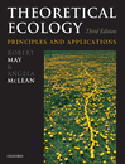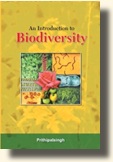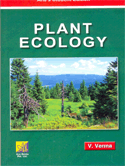
|
THEORETICAL ECOLOGY : Principles and Applications - ROBERT MAY |
Author |
ROBERT MAY
ANGELA McLEAN
|
|
Cover Price : Rs 695.00
|
Imprint : Oxford University Press
ISBN : 0195692926
YOP : 2007
Edition : 2007
|
Binding : Paperback
Total Pages : 264
CD : No
|
|
DESCRIPTION:-
- Fundamental topics in modelling ecological systems are covered in eight chapters setting out broad principles
- Provides a succinct, up-to-date overview of the field set in the context of applications, thereby bridging the division of theory and practice
- Chapters written by leading scientists in collaboration with some of the brightest members of the next generation
- Strong editorial leadership ensures a consistent style throughout the book
- An invaluable reference work as well as ideal material for theoretical ecology courses
Robert May's seminal book has played a central role in the development of ecological science. Originally published in 1976, this influential text has overseen the transition of ecology from an observational and descriptive subject to one with a solid conceptual core. Indeed, it is a testament to its influence that a great deal of the novel material presented in the earlier editions has now been incorporated into standard undergraduate textbooks. It is now a quarter of a century since the publication of the second edition, and a thorough revision is timely.
Theoretical Ecology provides a succinct, up-to-date overview of the field set in the context of applications, thereby bridging the traditional division of theory and practice. It describes the recent advances in our understanding of how interacting populations of plants and animals change over time and space, in response to natural or human-created disturbance. In an integrated way, initial chapters give an account of the basic principles governing the structure, function, and temporal and spatial dynamics of populations and communities of plants and animals. Later chapters outline applications of these ideas to practical issues including fisheries, infectious diseases, tomorrow's food supplies, climate change, and conservation biology. Throughout the book, emphasis is placed on questions which as yet remain unanswered.
The editors have invited the top scientists in the field to collaborate with the next generation of theoretical ecologists. The result is an accessible, advanced textbook suitable for senior undergraduate and graduate level students as well as researchers in the fields of ecology, mathematical biology, environment and resources management. It will also be of interest to the general reader seeking a better understanding of a range of global environmental problems.
CONTENTS:-
1. Introduction , Angela R McLean and Robert M May
2. How Populations Cohere: Five Rules for Cooperation , Martin A Nowak and Karl Sigmund
3. Single Populations: Dynamics , Tim Coulson and H Charles J Godfray
4. Metapopulations and Their Spatial Dynamics , Sean Nee
5. Predator Prey Interactions , Michael B Bonsall and Michael P Hassell
6. Plant Populations and their Interactions with Herbivores , Michael J Crawley
7. Interspecific Competition and Multispecies Coexistence , David Tilman
8. Community Dynamics , Anthony R Ives
9. Community Patterns , George Sugihara, Michael J Crawley, and Robert M May
10. Infectious Diseases , Bryan Grenfell and Matthew Keeling
11. Fisheries , John R Beddington and Geoffrey P Kirkwood
12. The Doubly Green Revolution , Gordon Conway
13. Conservation Biology , Andy Dobson, Will Turner and David Wilcove
14. Climate Change and Conservation , Jeremy T Kerr and Heather Kharouba
15. Unanswered Questions and why they Matter , Robert M May
ABOUT THE AUTHORS:-
Edited by Robert May, Professor of Zoology, Oxford University and Imperial College, London and
Angela McLean, Professor of Mathematical Biology, Oxford University.
|
|
 |

|
An Introduction to Biodiversity - Dr. Prithipalsingh |
Author |
Dr. Prithipalsingh
|
|
Cover Price : Rs 995.00
|
Imprint : Ane Books Pvt. Ltd.
ISBN : 9788180521867
YOP : 2019
|
Binding : Hardbound
Size : 6.25" X 9.50"
Total Pages : 232
CD : No
|
|
DESCRIPTION
This textbook focuses on different organisms studied by students of botany. The contents have been organized in self-contained units for ease of understanding. The initial chapters deal with fundamental aspects of diversity, its relevance and classification. The organisms are then analyzed, with emphasis on the important characters and systems of classification for each category of organisms. The information has been provided in a conceptual manner rather than describing representative examples of different kinds of organisms.
An evolutionary approach has been adopted in presenting the information, beginning with the prokaryotic viruses and bacteria, journeying through algae, bryophytes, pteridophytes, gymnosperms and culminating with the most visible components of the plant world the angiosperms. During this journey, it was not possible to leave behind the fungi. Although this fascinating group of organisms is no longer classified in the plant kingdom, it continues to find space in textbooks of botany.
CONTENTS
Preface
Contents at a Glance
1. Introduction
2. Diversity in Nature
3. Relevance of The Study of Plant Diversity
4. Classification of Biodiversity
5. Viruses and Bacteria
6. Algae
7. Fungi and Lichens
8. Bryophytes
9. Pteridophytes
10. Gymnosperms
11. Angiosperms
12. Suggested Readings
ABOUT THE AUTHOR
Dr. Prithipalsingh is recognized as an expert in Plant Taxonomy, Biodiversity Studies, Ecology and Environmental Biology. His education in St. Josephs College, Bangalore and the Department of Botany, University of Delhi provided him an opportunity to understand different aspects of biodiversity.
He has been teaching since 1971 as a Senior Reader in the Botany Department of Kirorimal College, University of Delhi. He has published numerous research papers in National and International Journals and also edited three books, He has been actively involved in the development and designing the Curriculum and Syllabi for B.sc., B.sc (Hons) Botany and Zoology, and the B.sc. Restructured Course of University of Delhi.
As a consultant member for Biodiversity with The Energy Research Institute (TERI), Dr. Prithipalsingh has participated in several World Bank funded research projects, besides completing a project on "Status of Biodiversity Conservation in Punjab" for the Punjab Forest Department. He has also served on the National Consultation Committee for discussing the "State of the Environment Report of India 2001" prepared by the UNEP.
|
|
 |

|
Plant Ecology - V. Verma |
|
|
Cover Price : Rs 495.00
|
Imprint : Ane Books Pvt. Ltd.
ISBN : 9789380618005
YOP : 2021
|
Binding : Paperback
Total Pages : 363
CD : No
|
|
About the Book
The fascinating subject of Ecology is taught at both undergraduate and postgraduate level. In fact, Ecology is now included in the school curriculum. The book has been prepared specially from the point of view of students. We have been teaching the environmental factors, the various ecological groups, the successional stages in the evolution of vegetation for quiet some time. But due to rapid strides in the field of ecology, detailed accounts of community dynamics, ecosystems biomes, biodiversity natural resources etc., have been included in the book. Due emphasis has been given on the impact of pollution on the environment. Latest data on conservation of forest, soil, water, land and wildlife have been provided. The book also deals with climate, soils, grasslands and forests of India. Suitable diagrams, maps, etc., have been given to illustrate the subject. The book has been written in a very lucid style and in an easily understandable language.
Contents
Plant Ecology: An Introduction Organisms and the Environment Organisms and the Environment-Edaphic Factors Organisms and the Environment (Contd.)- Topographic Factors Organisms and the Environment (Contd.)- Biotic Factors Species and Population Analysis of Plant Communities Community Dynamics (Plant Succession) Ecological Groups Ecosystem-Principles and Concepts Ecosystem (Contd.)- Dynamics of Ecosystem Production Ecology Terrestrial and Aquatic Ecosystems of the World Biodiversity and Conservation Natural Resources Environmental Pollution (A Major Threat to Ecosystem) Phytogeography Climate and Vegetation of India Origin, Formation and Classification of Soils Applied Ecology Practical Work Glossary Index
About the Author
Dr. V.Verma is an alumnus of the very illustrious Institutions of India, namely, K.P. Inter College, Allahabad; Ewing Christian College, Allahabad; University of Allahabad and University of Delhi. He has taught in the University of Delhi for more than 40 years. His books numbering about a dozen, have been widely appreciated by students and teachers of undergraduate as well as postgraduate classes in Indian Universities. At current, he is the Professor and Head of the Botany Department, Amity Institute for Competitive Examinations.
|
|
 |
|